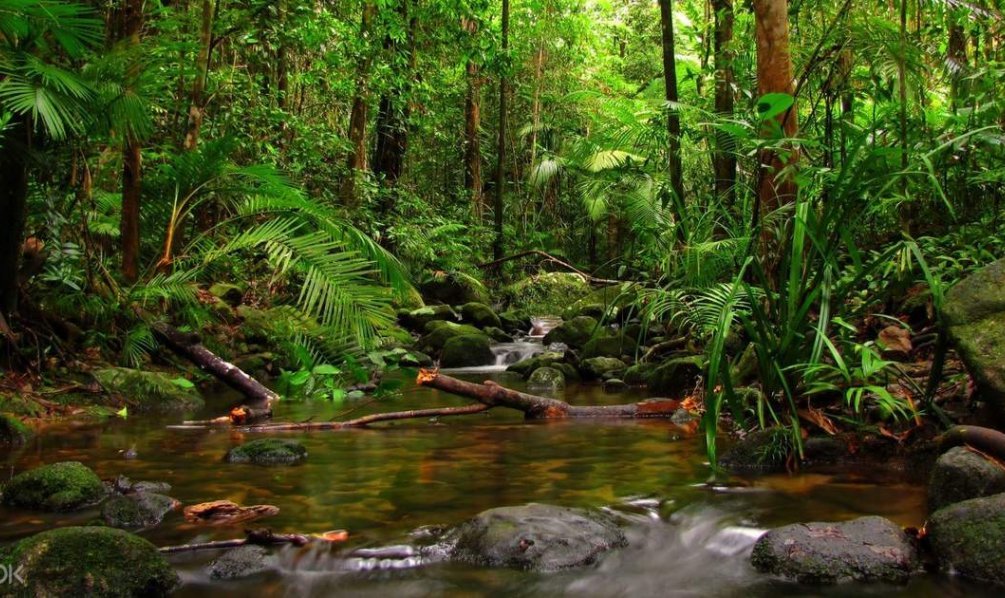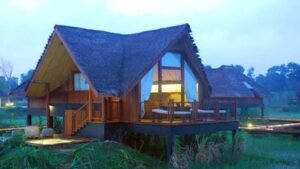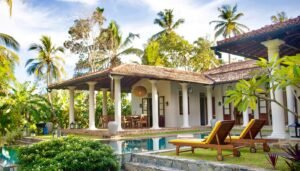
Tucked away in the heart of Sri Lanka lies a treasure that every eco-tourist and wildlife enthusiast should visit – Sinharaja Forest Reserve. A UNESCO World Heritage site, Sinharaja is a sprawling tropical rainforest brimming with biodiversity, untouched by the hand of modern development. Its untouched, wild beauty offers a rare glimpse into Sri Lanka’s rich natural heritage, making it an unmissable destination for those seeking adventure, tranquility, and a deeper connection with nature.
Sinharaja Forest Reserve – A Tropical Wonderland
Sinharaja, the “Kingdom of Lions,” is one of the last remaining rainforests in Sri Lanka, and its vast, vibrant expanse of greenery covers nearly 12,000 hectares. This biodiverse sanctuary is a paradise for nature lovers, photographers, and anyone looking to escape into the wilderness. Stepping into Sinharaja is like entering a living museum, where towering trees stretch to the heavens, and the air is filled with the symphony of exotic birdcalls, rustling leaves, and the distant sounds of wildlife.
What makes Sinharaja so special? Aside from its UNESCO status, Sinharaja is home to an astounding number of endemic species—plants, birds, insects, and animals found nowhere else on Earth. More than 60% of the trees in the forest are endemic, and it’s a safe haven for rare creatures like the purple-faced langur, Sri Lankan leopard, and the elusive Sri Lankan giant squirrel. The forest is also a birdwatcher’s paradise, with species such as the Sri Lanka blue magpie and the black-capped bulbul gracing the canopy.
As you wander through the lush trails, you’ll encounter a kaleidoscope of colors – from the vibrant orchids clinging to tree trunks to the deep greens of moss-covered rocks and the striking reds of the jungle vines. Each step you take unveils more of Sinharaja’s secrets, creating an unforgettable experience. Whether you’re hiking along the forest trails or simply soaking in the beauty of this living treasure, Sinharaja offers an unparalleled opportunity to reconnect with the planet’s untouched wilderness.
Explore the Heart of Sinharaja – The Trails
One of the best ways to experience Sinharaja is through its well-maintained trekking routes. These trails, varying in difficulty, wind their way through the forest and offer glimpses of hidden waterfalls, ancient trees, and rich biodiversity. The Gon Mula Trail, Dambana Trail, and Veddha Trail are just a few of the popular hiking routes that allow you to experience the raw beauty of the forest firsthand.
As you trek, you’ll be accompanied by local guides who are often passionate about the forest and its conservation. They’ll share fascinating stories about the forest’s history, the animals that inhabit it, and its cultural significance to local communities. Some believe that the forest is a spiritual sanctuary, and many locals consider it to be a sacred space. It’s easy to understand why—Sinharaja exudes a mystical, otherworldly vibe, transporting visitors to a world far removed from the chaos of daily life.
The Vibrant Wildlife of Sinharaja
Sinharaja’s richness is not only in its plant life but also in its diverse and often rare wildlife. The forest is home to over 20 species of amphibians, 15 species of reptiles, and 50 different mammals. Among the stars of Sinharaja’s wildlife scene is the elusive Sri Lanka leopard, an apex predator that roams the dense jungle. Other rarities include the Sri Lanka giant hornet, the Sri Lanka bush warbler, and the purple-faced langur, a monkey species that’s endemic to the island.
In addition to its endemic species, Sinharaja is an excellent place for birdwatching. Over 150 species of birds, including many rare and endemic species, live here. The forest is particularly famous for its avian residents, such as the Sri Lanka blue magpie, Sri Lanka wood pigeon, and the yellow-fronted barbet. Whether you’re an amateur or seasoned birdwatcher, Sinharaja offers an unparalleled birdwatching experience.
A Must-Visit for Eco-Tourism
Sinharaja is one of the top destinations for eco-tourism in Sri Lanka, and for a good reason. Its pristine environment has been remarkably well-preserved, making it a perfect location for sustainable tourism. The reserve encourages responsible tourism, with initiatives aimed at preserving its delicate ecosystem while still allowing visitors to experience its natural beauty.
In addition to its biodiversity, Sinharaja plays an essential role in regulating the island’s water systems. The forest acts as a natural reservoir, maintaining the water quality of surrounding rivers, and is a critical part of Sri Lanka’s water catchment system. This ecological service highlights the importance of conservation efforts in the region, making a visit to Sinharaja not only a thrilling adventure but also a meaningful way to support environmental sustainability.
How to Get to Sinharaja Forest Reserve
Sinharaja Forest Reserve is located in the southwestern part of Sri Lanka, and getting there is an adventure in itself. Below are the distances and transportation options from major locations in Sri Lanka.
Distances:
- Colombo City: 163 km (Approximately 4-5 hours by road)
- Colombo Bandaranaike International Airport (Katunayaka): 161 km (Approximately 4-5 hours by road)
- Kandy City: 122 km (Approximately 3-4 hours by road)
- Galle City: 60 km (Approximately 2 hours by road)
- Mattala Rajapaksa International Airport: 194 km (Approximately 5-6 hours by road)
Transportation Options:
- By Road:
The most common way to reach Sinharaja is by car or taxi. From Colombo, you can take the Southern Expressway to the town of Deniyaya, which is the gateway to Sinharaja. Alternatively, buses from Colombo, Galle, and Kandy also operate routes to the region, but the journey may take longer due to traffic. - By Road & Sea:
Combine a road trip with a scenic boat ride through nearby lakes or rivers. While not a conventional route, it’s an exciting way to add an extra adventure to your journey. - By Air:
For a quicker journey, you can book a domestic flight from Colombo to Mattala Rajapaksa International Airport and then take a taxi or car rental to Sinharaja. This option is more expensive but can save you a few hours of travel time. - By Bus:
Public buses run from Colombo and other towns to nearby areas, including Deniyaya, the closest town to Sinharaja. Once in Deniyaya, you can take a tuk-tuk or a local bus to the entrance of the forest reserve. - By Train:
While the train journey to Sinharaja isn’t direct, you can take a train from Colombo Fort Station to Weligama or Galle, and then use a combination of a bus and tuk-tuk to reach the reserve. - By Taxi:
A taxi or private car is the most convenient option, though it is on the pricier side. Many taxis are available from Colombo or Galle, and they will take you directly to the forest reserve.
Sinharaja Forest Reserve is a treasure trove of natural beauty, offering unparalleled experiences for those who seek to immerse themselves in Sri Lanka’s lush wilderness. Whether you’re trekking its trails, photographing its wildlife, or simply soaking in the peaceful atmosphere, Sinharaja is a place that leaves a lasting impression on every visitor. Its pristine ecosystem, vibrant wildlife, and rich history make it a must-visit destination for eco-tourists, wildlife photographers, and nature lovers alike. Embrace the tropical wilderness of Sinharaja and take home memories of a truly magical rainforest adventure.




